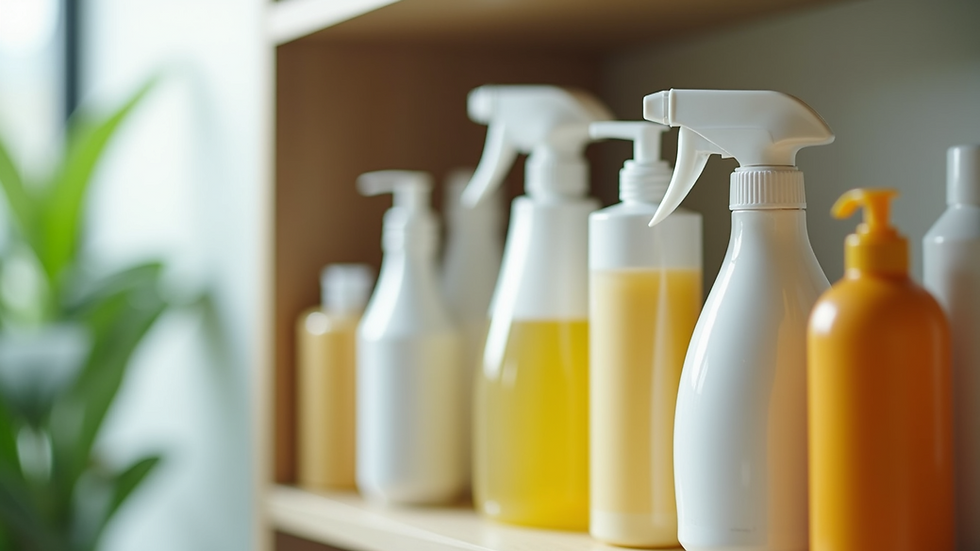Transform Your Home into a Breath of Fresh Air with These Easy Tips
- Alissa Mastropietro
- Sep 18
- 3 min read
Did you know that the air inside your home can be 2 to 5 times more polluted than outdoor air? Common issues like dust, pet dander, cooking odors, and cleaning chemicals can significantly impact your health and comfort. It might sound alarming, but the encouraging news is that you don’t need to spend a fortune to improve your indoor air quality. Small, easy adjustments can create a fresher, healthier environment for you and your loved ones.
Understanding Indoor Air Quality
Indoor air quality (IAQ) is about the air in your home and how it affects your health and comfort. Poor IAQ can lead to serious problems. For instance, studies show that around 50% of illness can be linked to poor indoor environments. Common pollutants include volatile organic compounds (VOCs) from household products, dust mites, mold, and pet dander. Recognizing these pollutants is your first step toward a healthier home.
Ventilation is Key
One of the most effective ways to enhance indoor air quality is through proper ventilation. Opening windows and doors can bring in fresh air, making a noticeable difference. In fact, studies indicate that just 15 minutes of outdoor air exchange can improve air quality levels indoors.
Using exhaust fans in kitchens and bathrooms helps eliminate moisture and odors that may accumulate. If the outdoor air quality is low or during allergy seasons, using an air purifier that features a HEPA filter can capture 99.97% of particles, keeping your indoor air clean.

Keep It Clean
Regular cleaning is essential for maintaining great indoor air quality. Dust and vacuum consistently to decrease allergens. Use a vacuum fitted with a HEPA filter—it traps even the tiniest of dust particles. Don’t skip those overlooked spaces; make it a habit to clean ceiling fans, baseboards, and behind furniture at least once a month.
When it comes to cleaning products, natural options are often safer. For example, vinegar and baking soda can tackle many cleaning tasks without the harsh chemicals found in conventional products.
Introduce Indoor Plants
Adding indoor plants can remarkably improve air quality. For instance, research shows that certain plants can reduce harmful toxins. Some of the best varieties for air purification include:
Spider Plant: Effective at removing formaldehyde and xylene.
Peace Lily: Purifies air effectively, filtering out ammonia and benzene.
Snake Plant: Noteworthy for its ability to convert CO2 into oxygen at night.
Incorporating a few of these plants not only enhances your home's aesthetic but also contributes to cleaner, fresher air.
Control Humidity Levels
Maintaining proper humidity levels is important. High humidity can promote mold growth and dust mites. Aim for humidity levels between 30% and 50%. If your home feels damp, especially in places like basements and bathrooms, using a dehumidifier can help lower moisture levels significantly. Also, ensure ventilation in areas susceptible to humidity, such as kitchens and laundry rooms.
Choose the Right Air Filters
If you have a central heating and cooling system, changing the air filters is critical. Clogged filters cannot effectively trap pollutants and can lead to poor airflow. Investing in high-efficiency filters can make a big difference; they trap smaller particles and improve air circulation. Make it a habit to check filters monthly and change them at least every three months. If you have pets or allergies, consider replacing them more frequently.
Limit Use of VOCs
Volatile organic compounds (VOCs) are prevalent in many products, including paints, varnishes, and some cleaning supplies. These chemicals can evaporate and contribute to poor indoor air quality. To reduce exposure, select low-VOC or VOC-free products whenever possible. Furthermore, always ensure proper ventilation when using products that emit VOCs, and store them in well-ventilated spaces.
Avoid Smoking Indoors
Cigarette smoke is a major indoor air pollutant that can linger for some time. If you or anyone in your home smokes, it’s wise to set a strict no-smoking policy indoors. This step alone can greatly improve air quality, creating a healthier environment for everyone.
Regular Maintenance of HVAC Systems
Keeping your heating, ventilation, and air conditioning (HVAC) systems well-maintained is essential for good indoor air quality. Schedule annual inspections and cleanings to keep your system working efficiently. A well-maintained HVAC system plays a key role in filtering out pollutants and providing optimal air circulation.
Create a Healthier Environment
Making improvements to your indoor air quality doesn’t have to be complicated or costly. By implementing these straightforward steps, you can create a more comfortable living environment for you and your family.
From ensuring adequate ventilation to selecting the right cleaning supplies, each small adjustment can lead to significant benefits. Take a moment to evaluate your indoor air quality and consider these actionable recommendations. Your health and well-being will greatly thank you.
Start today and transform your home into a breath of fresh air!




Comments